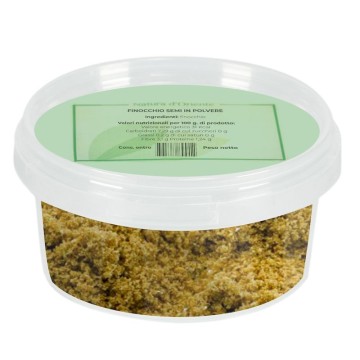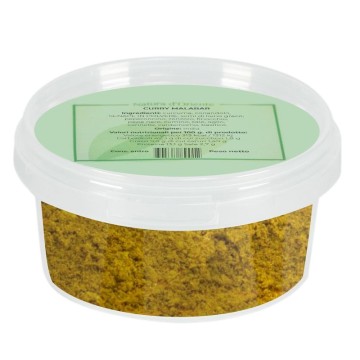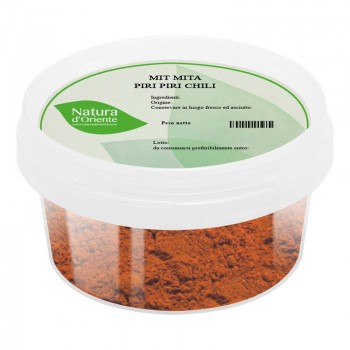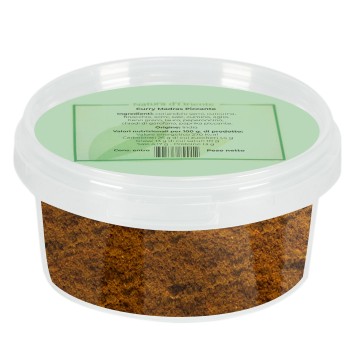Dill, one of the most used spices in oriental cuisine, also has a history in relation to its beneficial properties known since ancient times. Its active ingredients make its tips (tops) useful as a natural remedy for our well-being.
Dill is a rich source of antioxidants (flavonoids, phenols, saponins, terpenes) and compounds that help digestive function and the regular motility of the gastrointestinal system.
It promotes the elimination of gases from the stomach and intestines, facilitating the conditions that combat stomach pain. The infusion of dill tips has historically been used to calm abdominal discomfort related to the menstrual cycle, and as a natural purifier of the digestive system. It has properties useful for draining body fluids, detox qualities that help avoid water retention. By promoting the elimination of waste and the accumulation of excess liquids, it can be useful in combating the appearance of cellulite.
Moreover, like other spices, dill represents a natural remedy against bad breath and herbal tea it can also be used for gargles that are beneficial for the throat and oral cavity. From an aesthetic point of view, dill decoction is used for strengthening compresses of fingernails and toenails; periodically practicing hand and foot baths with hot water mixed with the decoction. Nutritionally, dill is a good source of essential nutrients including essential vitamins and minerals, including magnesium and manganese. For a dill herbal tea, you can use a spoonful of dill tips to infuse for about 8-10 minutes in boiling water.
Dill is a safe spice for consumption in the kitchen. Only in some rare cases can it cause allergic reactions; in this case it is best to contact your doctor and stop taking dill.
Using dill tips in cooking
Dill leaves have a sweet and herbaceous flavour, with a light spicy taste reminiscent of anise and cumin; some notes are slightly pungent and minty. The sweet and floral aroma evokes fennel. Due to these properties, dill tips are used in a versatile way in the kitchen, excellent on fish dishes such as salmon, prawns or tuna. They make potato or cucumber salad lively, and are a tantalizing ingredient in Greek tzatziki sauce – or other yogurt-based sauces. The intensely flavored tips are historically used in pickle infusions, in the preparation of dill mustard, and as an ingredient in spice blends.
The tips can finish soups, soups, stews – dishes in which the dried tips give a particular taste. It is also used on roasted potatoes and vegetables, in lamb and chicken dishes, or on eggs. The drying process of dill concentrates the flavor, and for this reason the aromatic profile becomes intense: just a few tips are enough to enhance dishes with its presence. It is usually added during the cooking process, as it takes time to release its aromas but should not be heated excessively at high temperatures.
Origins and history of cultivation
Native to Asia, dill has been used since ancient times for culinary and medicinal purposes. The plant, Anethum graveolens, is part of the Apiaceae family and soon spread throughout Asian and European cuisines.
It shows thin stems, soft leaves and flat, brown oval seeds, also used in cooking and herbalist. Dill tips are the aromatic and tasty part used in most recipes. The history of its use dates back millennia ago, when it was used by Egyptian doctors 5000 years ago. Its use was common as an Ayurvedic remedy in India, for abdominal disorders, colic and to aid digestion.
In the Roman period it was thought that dill had the property of increasing physical strength. It is not surprising, therefore, that for gladiators it was one of the main condiments to be added abundantly to every dish. The cook Apicius used this herb in many recipes, including chicken with dill.
Even today, dill is widely used in the cuisines of the Mediterranean, the Near and Middle East and Northern Europe. In particular, in Greece the tops or tips of dill flavor sauces, fish marinades, cheeses such as feta, legumes, oil and vinegar. The green and slender leaves of dill are very widespread in the cuisine of central and northern Europe: in Germany and Hungary they use dill tips together with other aromas to prepare sweet and sour pickles and mustard. In Scandinavia, dill is common for flavoring eggs, salmon, potatoes and soups. It was also used by Scandinavians to treat digestive disordersvi.
In cultivation, it is important to harvest the young dill tips as early as May and until September. The individual tips are cut into pieces of approximately 15 centimeters and then dried to maintain them over time.
Dill pickled gherkins
Ingredients: 1 kg of gherkins - 50 g of sea salt - 2 tips of dill - 2 teaspoons of dill seeds - 2 teaspoons of dill seeds mustard - 2 peeled garlic cloves - 600 ml of white wine vinegar - 100 g of sugar – sterilized jars
Preparation Wash the gherkins, cut them, removing the ends, and reducing them into slices or washers. Place in a deep dish, sprinkle with salt and mix to distribute it better. Cover the surface with baking paper and place a plate on top. Leave in a cool place for 12 hours. Pour into a colander and rinse the gherkins under cold water. Drain excess water well and let dry for 5-10 minutes. Place a pinch of dill in each sterilized jar. Add a teaspoon of dill seeds and mustard seeds, and a clove of garlic to each jar. Take a large pot and put the vinegar, 200 ml of water and the sugar. Heat over a low heat, stirring until the sugar has dissolved. Add the gherkins and simmer for 5–6 minutes, wait until they turn dull green. Remove from the heat and place the gherkins in the prepared jars. Return the remaining liquid to the heat and bring to a boil. Pour the boiling preserving liquid into the jars, making sure it completely covers the contents. Screw the lid on tightly and turn the jars upside down for about 15 minutes, to ensure that the lids are vacuum sealed. Turn them over again and let cool.
Alternatively, prepare the jars and lids for sous vide by boiling. Wrap the jars with tea towels to prevent them from touching each other and place them in a tall pan. Cover the jars with cold water up to the tops and boil over medium heat for about 25 minutes. Turn off the heat and leave the jars immersed in the water to cool. When the water is cold, take out the jars and check that the vacuum has formed by pressing in the center of the caps. If they make a clicking noise, the vacuum has failed – you need to repeat the operation. After vacuum packing, place the pickled gherkins in a cool, dry place, away from light, to rest for at least a month before consuming them.


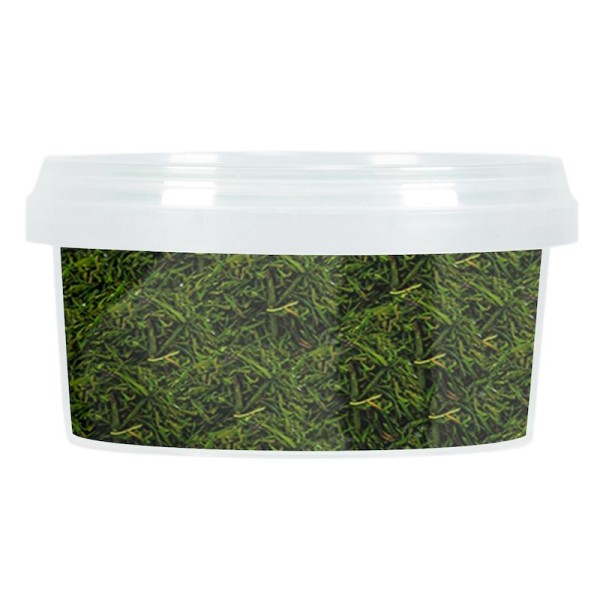








 No reward points for this product.
No reward points for this product.





